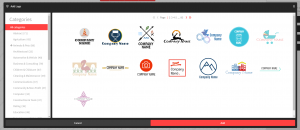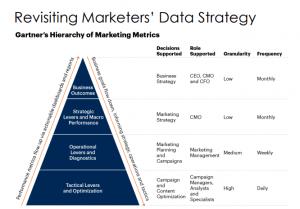 Get used to the gig economy
Get used to the gig economy
When startups like Uber, TaskRabbit, Shyp, and Wonolo burst onto the scene, they created a new breed of workers, many hailing from the millennial generation, who eschewed traditional full-time employment for a combination of freelance projects and contract work. This talent no longer earns a living founded on an indefinite connection to a specific company or industry; they instead connect to a variety of employers – or clients, really – to accomplish particular tasks or achieve short-term business objectives for a defined period of time. The nature of their flexible assignments and constantly changing venues inspired the term “gig economy,” which invokes the dynamic arrangements of session musicians that complement established groups, or bands that perform nightly for different clubs.
While the gig economy offers the obvious benefits of cost containment and overhead reduction for employers, it’s caused a fair amount of concern. Regulatory bodies and legislators worry how the independent role of the talent will impact existing employment laws, misclassification issues and taxation. Others worry that the lack of stability in the work could lead to unemployment problems or labor suits. Despite the newness and ambiguity, all signs point to the gig economy as a fixture that’s here to stay.
There’s another emerging side to this discussion, though. As the workforce becomes more dynamic, more infused with various classes of contingent talent, how can hiring managers and HR leaders effectively oversee all the different types of complementary workers in their blended teams while maintaining compliance, productivity and profitability? There are new technologies flooding the market, catering to the administration of these professionals: online work platforms, freelance management systems, independent contractor compliance and administration tools, and others. However, for a lot of employers, this means they’re forced to learn and operate even more software applications. The solution? Call in an MSP!
The gig economy is the new economy
Just how big and ingrained is the gig economy? According to the latest figures, over 53 million Americans are freelancing or contracting. That’s about one in three workers. In fact, the majority of all new jobs created are contingent. It’s a trend that started around 2001 and gained serious momentum in 2008 during the Great Recession and its rather vapid recovery. The data depict a dramatic change in how we should be thinking about the nature of work. Take a look at the following chart, which aggregates data from the U.S. Bureau of Labor Statistics. While the majority of workers still operate under traditional full-time employment arrangements, most new jobs created since 2001 have been contingent.
Though we tend to think of contingent talent as day laborers, agency temps, consultants, freelance writers, Uber drivers or construction workers, professionals in nearly every industry – blue or white collar – are witnessing this transformation. Consider academia. Adjunct and part-time professors now make up the majority of faculty in colleges across the country. The traditional tenured staff account for less than one third of the teaching population in higher education, and they instruct fewer than 50 percent of the classes.
Proponents of the gig economy cite the advantages to everyone involved. Gigs enable companies to enhance cost savings and process efficiencies through contingent work. They also empower talent with flexible scheduling, greater work-life balance, learning opportunities and skills acquisition. However, the new arrangements are raising questions. In this new reality, employers find themselves faced with developing compatible talent acquisition strategies to attract, engage, and manage complementary workers without disrupting existing operations. And their path forward to the coveted pot of gold could very well lie with Managed Service Providers.
MSPs in the gig economy
MSPs used to be described as experts in herding cats. With all the different types of contingent labor in today’s increasingly blended workforce, MSPs can prove instrumental as shepherds of large, diverse flocks. They have the experience, resources, tools and best practices needed to identify new needs across the enterprise, access and entice the right talent, maintain compliance among all the different contingent categories and ensure operational and cost efficiencies.
Attracting gig talent. Different types of gig talent suit different environments, and they satisfy specific needs. To engage the right workers — be they independent contractors, freelancers or agency temps – MSPs work closely with clients to analyze requirements and determine the appropriate personnel for each position, mining data and evaluating predictive analytics for those roles. Yet, not all workers have the same motivations or objectives. That’s where an MSP’s seasoned staffing partners come into play. Their expertise in social recruiting, developing, and promoting compelling employment brands, and communicating a targeted value proposition to each candidate type is essential. Beyond that, they understand how to match business cultures to individual workers whose professional goals and values mesh.
Comprehending organizational needs. Client hiring managers, procurement leaders and HR officers know what they want, yet all from their varying, independent perspectives. MSPs, by nature of the engagement, get a rare opportunity to survey the entire organization’s employment landscape. Through the information they are provided and stakeholders to which they are given access, MSPs develop a heightened level of visibility and objectivity. This insight, and accompanying program data, allows them to see short-term, near-term and long-term needs; identify the skills needed today and in the future; and determine the best talent to fill all of those demands.
Focus on quality and compliance. With greater variance in labor types, a blended talent strategy of this complexity runs the risk of introducing non-compliant practices into the program if left uncurated. MSPs have always committed themselves to tackling those problems. In the gig economy, this oversight becomes more imperative. Fortunately, MSPs have been cultivating compliance procedures for years that extend beyond assignment length and breaks in tenure. Many have specific compliance solutions for independent contractor qualification, worker classification, exempt vs. non-exempt policies, Statement of Work (SOW) management systems and more. Clients who enlist the support of an MSP instantly gain access to these resources, which is mission critical in a talent population comprised of more than agency temps.
Comprehensive management. This is a hallmark of MSPs and speaks to their core competencies. Most MSPs have long been exposed to working with different contingent talent groups. They know firsthand how these workers’ needs differ, as well as the nuances in scheduling, measuring attendance, reporting on metrics, executing the proper agreements, ensuring compliant billing, the appropriate management techniques, and more. And because managing outsourced enterprise workforce efforts is their job, MSPs aren’t overwhelmed by all the other corporate obligations that fall on hiring managers. They have the resources and dedicated account teams to install for each contingent talent group. In the end, all the moving parts involved in overseeing a gig economy workforce appear seamless to clients, who can focus on running their businesses.
A new world to some, a very familiar one to others
While client hiring managers endeavor to adjust to the workforce changes that come with this gig economy, MSPs feel right at home. They understand and have worked with these different talent categories before. They have already immersed themselves in learning the new freelance and online work platforms. Many of their leading VMS providers have even integrated the functionality into their systems. And, more importantly, MSPs have been consolidating blended workforces for years: RPO with contingent, independent contractors, SOW contractors, and more. For clients who enlist MSPs, the new economy will not dawn as a daunting day of reckoning, it will simply pass as another productive day at the office.
(191)
Report Post






